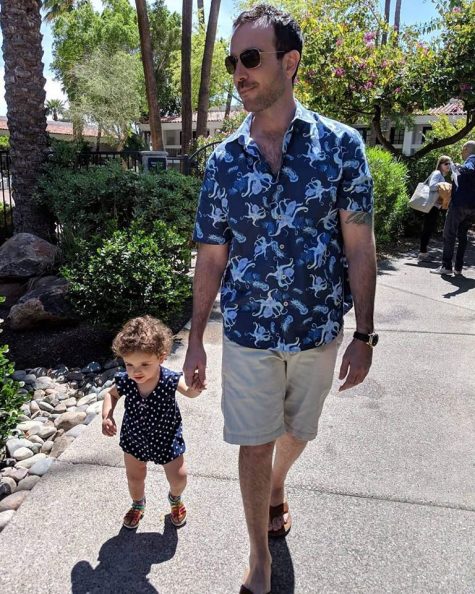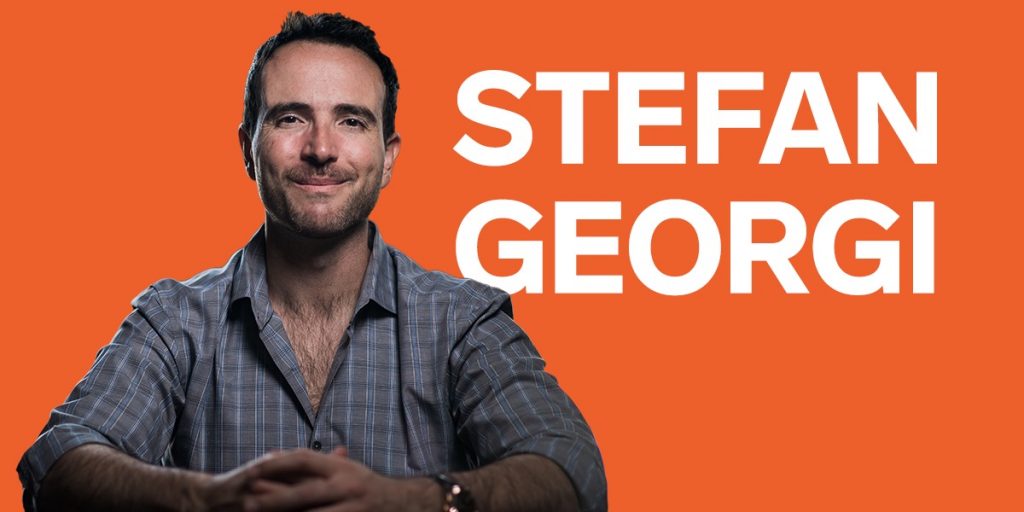
The idea behind Emotional Response Marketing came about by accident. I’d been invited to present on Email Copy at one of Shanda Sumpter’s Marketing Mastery Events. The talk I prepared was not what I’d set out to create. Yet it immediately became one of my favorite presentations I’d ever done. It was all about how being authentic, honest, and raw is the best way to build a relationship with your tribe. And further, it was about how building that relationship is the key to a highly profitable business.
In this article, which is adapted from a post I originally put in the FB Group Justin and Stefan Talk Copy…
I’ll be digging deep into Emotional Response and contrasting it to Direct Response (they really are very different). Before I do that though…
Before I do that though…
Let me first share some of my central tenets from the talk I gave at Shanda’s event…
That way you can see exactly how I arrived at the concept of Emotional Response Marketing in the first place.
Trust, Love and Profit: How Writing Killer Email Campaigns Can Generate Customers For Life.
And here’s why I chose Trust, Love, and Profit…
Along with how they fit together:
Trust
Your goal should be to build trust with your subscribers through vulnerability, honesty, rawness, authenticity, and emotion.
Love
It’s much easier for us to love someone if we trust them first. We want our customers to buy from their hearts, not their mind.
Profit:
When people trust you, and love you, they buy more frequently and in higher quantities.
I went on to say the following:
The greatest profit from your list happens when…
1. You have a deeply engaged and connected tribe
2. They implicitly trust you
3. And they and believe that anything you’re selling them is coming from a place of having their best interests at heart (love).
And then finally I pointed out that:
Especially emotional stories.
Why emotional stories? Because these are the types of stories that connect with your reader.
I’d say there are two broad types of stories…
1. Personal Stories like:
– Pivotal moment in your life
– A personal struggle
– A recent success
– A conflict with another
– A recent discovery you made in your life.
2. Other’s Stories
– A Lesson
– Story of A Famous Person
– Anecdotal
– Allegorical
– Horror Story
– Someone’s Success Stories
For those of you who are on my business partner Justin Goff’s list – you know that these two types of stories make up about 95% of the email content he sends out….
I’m the same way with both my email list…
And my posts in the Justin and Stefan Talk Copy Facebook Group…
And what you’ll also notice is that about 90% of the time…
The emails and posts that Justin and I put out…
Don’t have any call to action at all…
They are purely value driven.
we may instinctively feel like that’s a waste.
Or we may look at the value driven content and say – “well that’s all a means to an end. It’s the set up for the Direct Response promotions that you’ll occasionally send out.”
On the one hand you’re right…
But taking that stance also overlooks something really fundamental…
Which is that when we’re creating value-driven content, through the use of stories, and sharing them with our tribe…
Each one of those communications is also an end unto itself.
In other words, each of those communications does have a specific goal…
Which is to elicit an Emotional Response.
(*This is my definition at least. I did a quick Google Search before writing this post, and there aren’t many people using this terminology. I did find one agency at least who’d used it, so I can’t say I’m inventing this term. But I am putting my flag in it and taking it over.)
When I write FB Posts and emails that are honest, raw, confessional, etc…
My only objective or agenda is to elicit an Emotional Response from my audience – whether that be empathy, laughter, motivation, anger, excitement, etc.
And I’ve never talked to Justin Goff about this, but I’d argue it’s the same thing with his email list too.
So yeah, that’s the idea of Emotional Response Marketing.
It might sound simple, but I think it has massive implications.
I also think this is where a lot of marketing is heading coming into 2020…
And it’s what I’ll be continuing to focus on as I build my list, grow my personal brand, speak on more stages, etc.
Plus here’s the thing…
The reason why comes back to Trust, Love, and Profit.
Through Emotional Response Marketing and storytelling, you’re building more trust and love between yourself and your tribe.
And as a result, when you do ask your tribe to take an external action (ie. Respond to a Direct Response Offer), they’re much more likely to do it.
A case in point for all of this is Justin’s Email List.
Between that list and our FB Group, we sold something like 130 tickets to our event in Austin at $1,800 each. And then at the event in Austin, we put well over 30 people into Copy Accelerator. There’s also been some significant additional deal flow that happened as a result of this event.
So in other words…
Thanks to Justin’s list and the FB Group we both run…
We generated over $1MM of revenue at a single event…
And longer-term it’ll end up being several million dollars (Copy Accelerator Renewals + said deal flow).
All of this from a 900 person list (Justin’s list size at the time) and a 1000 person FB Group (the size of this group at the time)….
And we got these results not through Direct Response Marketing…
But through Emotional Response Marketing.
That’s the secret and the key.
And 99% of the time, when he emails his list…
There’s no call to action at all…
It’s just him providing a ton of value and connecting with his tribe authentically and emotionally.
with my posts in Justin and Stefan Talk Copy…
99% of the time, we’re simply trying to give as much value to our tribes as we possibly can…
We’re focused on creating trust and love between ourselves and our audiences…
And a side-effect of this…
Is that when we do ask our tribes to take an action…
Very often, they say “okay.”
That’s the profit part of Trust, Love, and Profit…
But the Profit only comes after Trust and Love have been established.
Also, you should note that even when we do make an ask…
We’re still leading with value first…
Still connecting personally with our audience…
And only then do we transition to Direct Response…
Where we request the reader/viewer to go ahead and take an action.
Here’s an example of one of Justin’s Emails he sent out promoting the event…
Do you notice how the email is very heavily story-driven? How it’s got emotions like laughter, excitement, and disbelief? It’s really well done.
You should also pay attention to the fact that only at the end of the email does Justin transition into promoting our live event. He’s not hurried at all and there’s no urgency. Justin is much more concerned with drawing you in than he is with trying to sell you – and that makes a HUGE difference.
And here’s an example of one of my FB Posts promoting our event…
It’s long and it’s full of value, right?And the funniest part is…
That just like I mention at the end…
When I was writing that post, I wasn’t even planning on promoting our Live Event. Instead, I just wanted to share my thoughts about how important your personal network is. But as I was writing, I realized that it did tie-in seamlessly with our upcoming Copy Accelerator Event. So I had no problem with adding that part in at the bottom.
I should also point out that multiple people have told me that post is one of the reasons they ended up buying a ticket to attend our event in Austin…
Including several people who ended up joining Copy Accelerator, which is $25,000 per year…
So the ROI on that single post was over $100,000…
But I didn’t even set out to realize an ROI…
It happened organically…
And that’s a big part of why it was so effective.
So here’s the important point I’m trying to make…
In many cases, especially when you have a personal brand, Direct Response actually works best when it’s an extension of Emotional Response.
Because as you’ve just seen…
Even when Justin does promote something to his list…
Or when I promote something to my list or on FB…
You’ll notice that the email, or the post, does still lead with a ton of value. It’s usually still a unique and valuable story. The only real difference is that in the promotional content – at the end we transition into including a CTA.
This is different than just a raw, naked promotional post or email. I’ve done plenty of those too, but the response rate pales in comparison to story-driven, Emotional Response content.
A few final thoughts…
I hope you’ve found this post valuable and interesting. To me, it’s fascinating. And Emotional Response Marketing is going to play a large part in much of my marketing efforts in 2020 and beyond. So if you’re on my email list, or you come to this website often – you’ll see all of this in action.
I’m also going to continue fleshing out this idea in the months and years to come. So make sure to read my blogs and emails regularly, because I feel like I’m just scratching the surface here. There’s so much more to be unpacked, and I’m really excited to keep exploring this idea!
